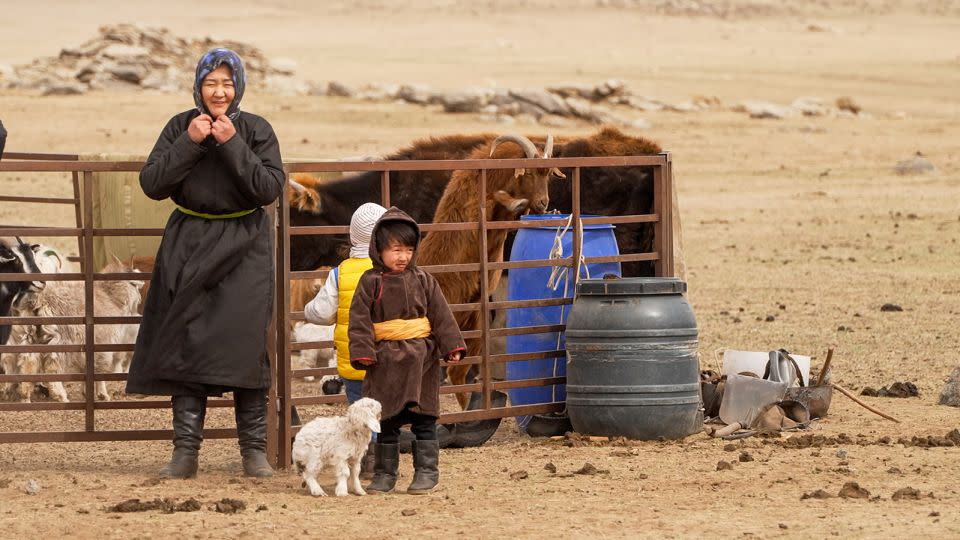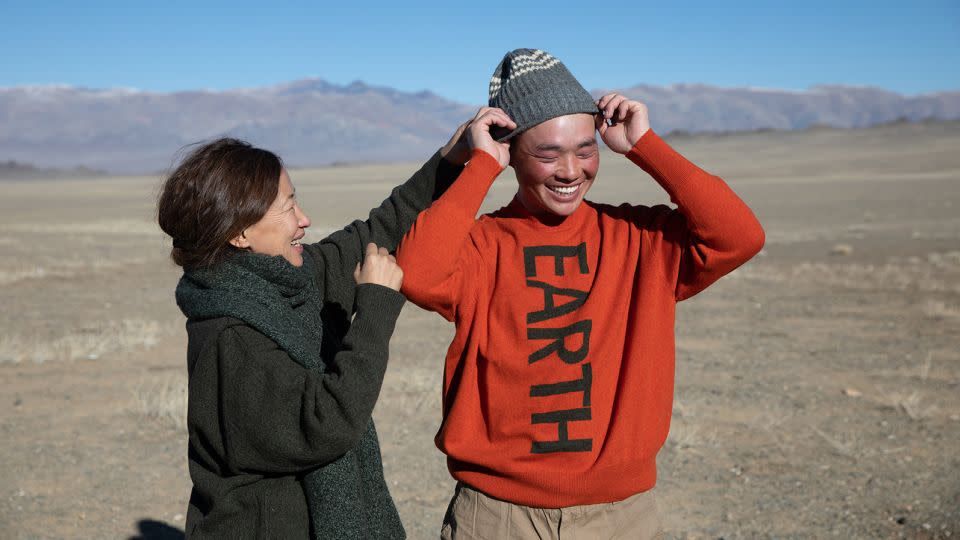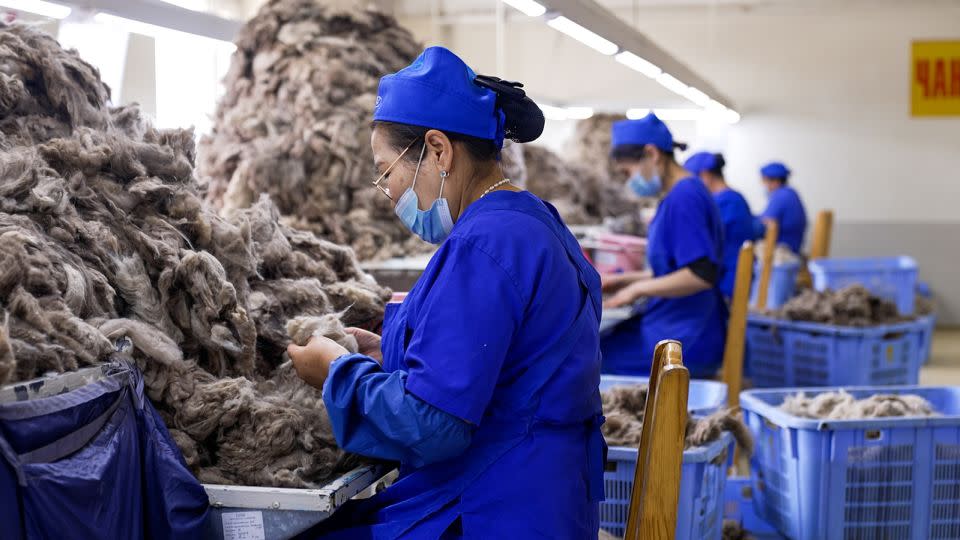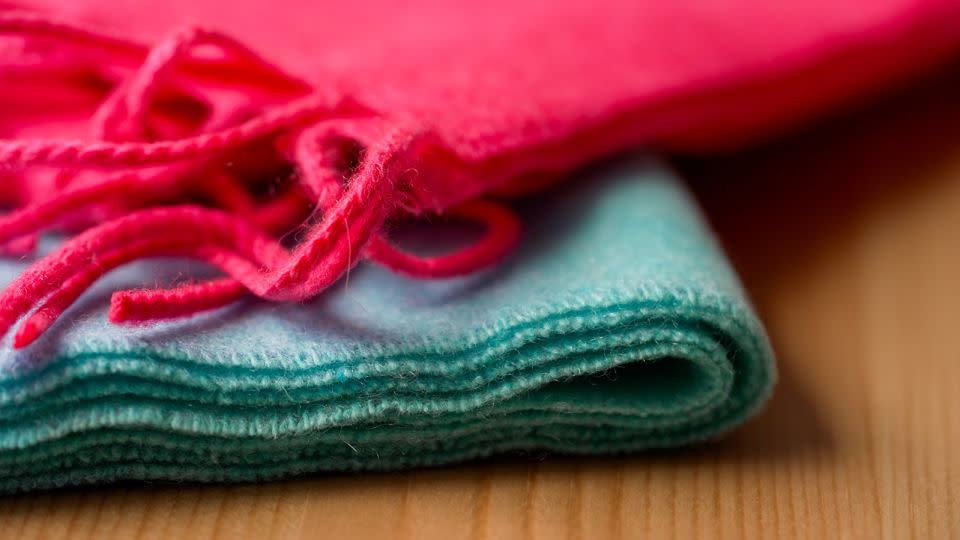Cashmere demand is threatening Mongolia’s steppe. Can the industry go sustainable?

Editor’s Note: This CNN story is based on reporting for a series that is, or was, sponsored by the country it highlights. CNN retains full editorial control over subject matter, reporting and frequency of the articles and videos within the sponsorship, in compliance with our policy.
By spring on central Mongolia’s vast grasslands, the bitter winter snows have largely melted, but strong winds and sandstorms can make this one of the harshest times of the year.
For herder Bayarduuren Zunduikhuu, it is also one of the busiest.
“We wake up as the sun rises,” she says. “Spring is all about the cashmere harvest.”
Like many members of Mongolia’s estimated 300,000 nomadic herder households, Bayarduuren makes much of her income collecting and selling cashmere wool from her free-roaming goats. She combs the animals’ fleeces one by one, teasing out the fine underbelly fibers they molt as the weather warms.

Prized for its durability and softness, cashmere is used to make luxury sweaters, scarves and blankets. Around 40% of the world’s cashmere comes from Mongolia — roughly 10,000 metric tons in 2021 — according to the United Nations Development Programme (UNDP). Today, cashmere is one of Mongolia’s main exports.
But growing global demand for this luxury wool is taking a toll on the environment and jeopardizing traditional ways of life. As the cashmere market has soared in recent decades, so too has the number of goats grazing on Mongolia’s grasslands. There are now an estimated 27 million of them, meaning they outnumber people in the country by more than eight to one.
Climate change, extreme weather and livestock grazing have combined to leave around 70% of pastureland degraded to some extent, according to the UNDP. This threatens to irreversibly devastate Mongolia’s ecosystems — and the industries that rely on them.
Transparent cashmere
Amid these environmental concerns, some luxury labels are turning to more eco-friendly alternatives. But a new generation of Mongolian designers is looking for ways to make cashmere more sustainable while also supporting local herders.
The process often starts with understanding exactly where — and how — the material is produced, according to Oyuna Tserendorj, who grew up in Mongolia and now runs a cashmere clothing and homeware label.

Founded just over 20 years ago, Oyuna is stocked in luxury department stores like Harrods in London and Lane Crawford in Hong Kong. Though she runs her label from London, the designer sources and produces her clothes in her home country.
“We have a very short supply chain. We design our collections, and we work with the factories in Mongolia,” Oyuna says. “And we know which areas and nomadic cooperatives our cashmere comes from.”
Oyuna’s considered approach comes at a premium. While some mass market retailers sell 100% cashmere sweaters for under $80, hers can cost over $1,000.
Luxury labels’ yarn quality, small-batch production and labor-intensive handcrafting processes can account for some of the differences in cost. But sustainable practices also impact garments’ price tags.
Oyuna supports programs the non-profit Sustainable Fiber Alliance (SFA), which helps herders improve their land management, animal welfare and access to the global cashmere market. She only sources from herders that meet SFA’s sustainability standards, even if that means spending more on materials.

Making herders’ businesses more profitable may reduce environmental pressures by discouraging overgrazing, according to the UNDP. For instance, processing and manufacturing more cashmere in Mongolia, which currently exports up to 90% of the material raw (long before it becomes yarn, let alone a hat or shawl), could provide them with additional income without the need for more goats. The UNDP suggests that herders could clean and sort the cashmere for local companies directly — and by ensuring their cashmere is not mixed with others, they can also better control the quality and thus charge higher prices.
Yak wool: The new cashmere?
A growing number of labels are looking for ethical alternatives to traditional cashmere. Stella McCartney, for instance, has used only recycled cashmere since 2016. This helps combat waste, with an environmental impact seven times lower than virgin cashmere, the brand says.
Japanese startup Spiber has, meanwhile, developed a spiderweb-inspired synthetic cashmere alternative by fermenting plant-based ingredients into a protein polymer. Athleisure label KD New York has meanwhile produced a fabric with similar qualities to cashmere using soy-based fibers.
These high-tech materials are yet to be widely adopted. But several brands are turning to a readily available cashmere alternative — one that can provide Mongolian herders with an income while protecting their land from degradation: yak wool.
Bodios is among the labels betting that yak could be the next big thing. The Ulaanbaatar-based knitwear brand says it produces more than half of its yak wool items — including sweaters, scarves and blankets — in Mongolia.
Yak wool is collected in a similar way to cashmere, as yaks and goats both grow insulating hairs under their woolly fleeces for the winter. The material isn’t as popular as cashmere, in part because the fibers are coarser and darker, making them harder to dye.
But Bodios’ manager Ishbaljir Battulga says that yaks’ grazing habits are kinder on the ecosystem. For example, while goats uproot plants as they eat, yaks only touch the leaves, making it easier for pastures to regrow. They also graze at a higher altitude, meaning they do not contribute to degrading already over-exploited grasslands.
Some experts believe that growing the market for yak wool — also known as yak down — could provide an eco-friendlier source of income for herders in Mongolia. And some Mongolian knitwear-makers are hoping to use material’s comparative rarity (there are fewer than a million yak in Mongolia) as a selling point.
“In terms of softness, the cashmere and the yak down are very close,” Ishbaljir says. “The yak down is warmer … and at the same time, it breathes better.”

Ulaanbaatar-based boutique studio Hypechase makes yak wool clothing in small batches for its eponymous label, as well as other brands around the world. Founder Adrien de Ville says the material, when left in its natural, undyed colors (which can range from dark brown to gray and white), is gaining popularity among both mainstream and experimental designers, like Antwerp-based Jan-Jan Van Essche.
Less is more?
Despite the growing number of alternatives, global appetite for cashmere clothing continues to swell. Market analyst Grand View Research has estimated that the industry will grow by more than 6% a year until 2030, by which time it will be worth $4.23 billion. But according to Elaine Conkievich, the UNDP’s resident representative in Mongolia, the sector can still grow sustainably if buyers prioritize quality over quantity.
“It’s not about massively increasing the numbers (of garments), but really keeping good quality throughout the value chain, and sustainable practices,” Conkievich says.

“If consumers abroad are looking and saying, ‘OK, this Mongolian sweater, scarf or gloves were produced from beginning to end in Mongolia, it’s benefiting the herder lifestyle and the animal welfare is factored in,’ then that will then bring a higher price.”
How realistic this is, in an age of fast fashion, remains to be seen. For herders like Bayarduuren, however, a more sustainable industry could help her maintain a life on the steppe. It’s something she has previously considered trading in for a job in the city — despite what she describes as a deep connection to nature.
“My parents were herders and I also chose to lead a herder life,” she says. “This way of life has been passed down in my family for generations.”
CNN’s Dan Hodge and Kayla Smith contributed to this report.
For more CNN news and newsletters create an account at CNN.com